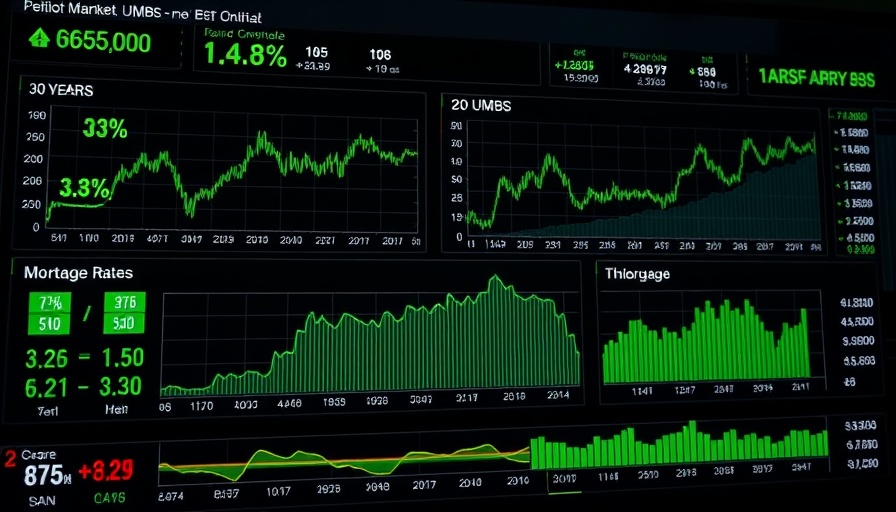
Understanding the Current Bond Market Dynamics
The bond market recently experienced a slow and steady decline, with minimal losses seen throughout the trading day. On September 22, 2025, the market appeared to be affected more by trade dynamics tied to the NYSE open than by any significant economic news or Federal Reserve commentary. The gradual nature of these losses signals a particular narrative in the financial world—one where traders and investors are navigating uncertainty with caution.
What Are the Implications for Mortgage Rates?
Mortgage rates, which have a direct correlation with bond yields, are currently hovering around 6.35% for a 30-year fixed-rate mortgage. Such rates remain relatively unchanged, indicating stability in an often volatile market. For prospective homebuyers or those considering refinancing, understanding these trends can be crucial.
The Role of Federal Reserve Signals
Multiple Federal Reserve speakers made appearances on this day, yet their remarks failed to elicit significant reactions from the market. This lack of impact could reflect a broader sentiment of uncertainty as stakeholders await the upcoming jobs report, which will serve as a critical indicator for economic performance. The data might guide future Fed decisions regarding interest rate adjustments.
How Investors Are Viewing Market Trends
Investors are experiencing a period of consolidation, where the market’s movement becomes more subdued. With the Fed’s position influencing bond yields and mortgage rates, the caution exhibited in the markets reflects a wider apprehension regarding economic stability. Homeowners looking to tap into home equity or refinance existing loans would be wise to keep a close eye on these evolving rates as they consider their options.
The Impact of Slow Movements on Homebuyers
For many homebuyers, the current mortgage rates may feel restrictive compared to previous months. However, the slow, gradual movement in the bond market indicates that dramatic shifts are not imminent, which could be a relief for buyers facing decisions in the near term. Furthermore, those in real estate may need to adjust their strategies to navigate these changing conditions, keeping in mind that while rates remain stagnant, the homes' market dynamics could shift unexpectedly.
Future Predictions and Market Opportunities
As we look forward, the upcoming jobs report from the Bureau of Labor Statistics will undoubtedly play a significant role in shaping market sentiment. Analysts expect that a positive report may reinforce confidence in the market, potentially leading to a stabilization or even a decrease in rates. Conversely, disappointing job growth could heighten fears of an economic downturn, prompting the Fed to alter its current course. For both homebuyers and investors, staying informed is key.
To navigate these uncertain waters, consumers can benefit from engaging with their financial advisors, who can provide tailored guidance suited to their unique situations. Taking the time to understand the seasons of the market can empower individuals to make informed choices that enhance their financial well-being.
 Add Row
Add Row  Add
Add 




Write A Comment